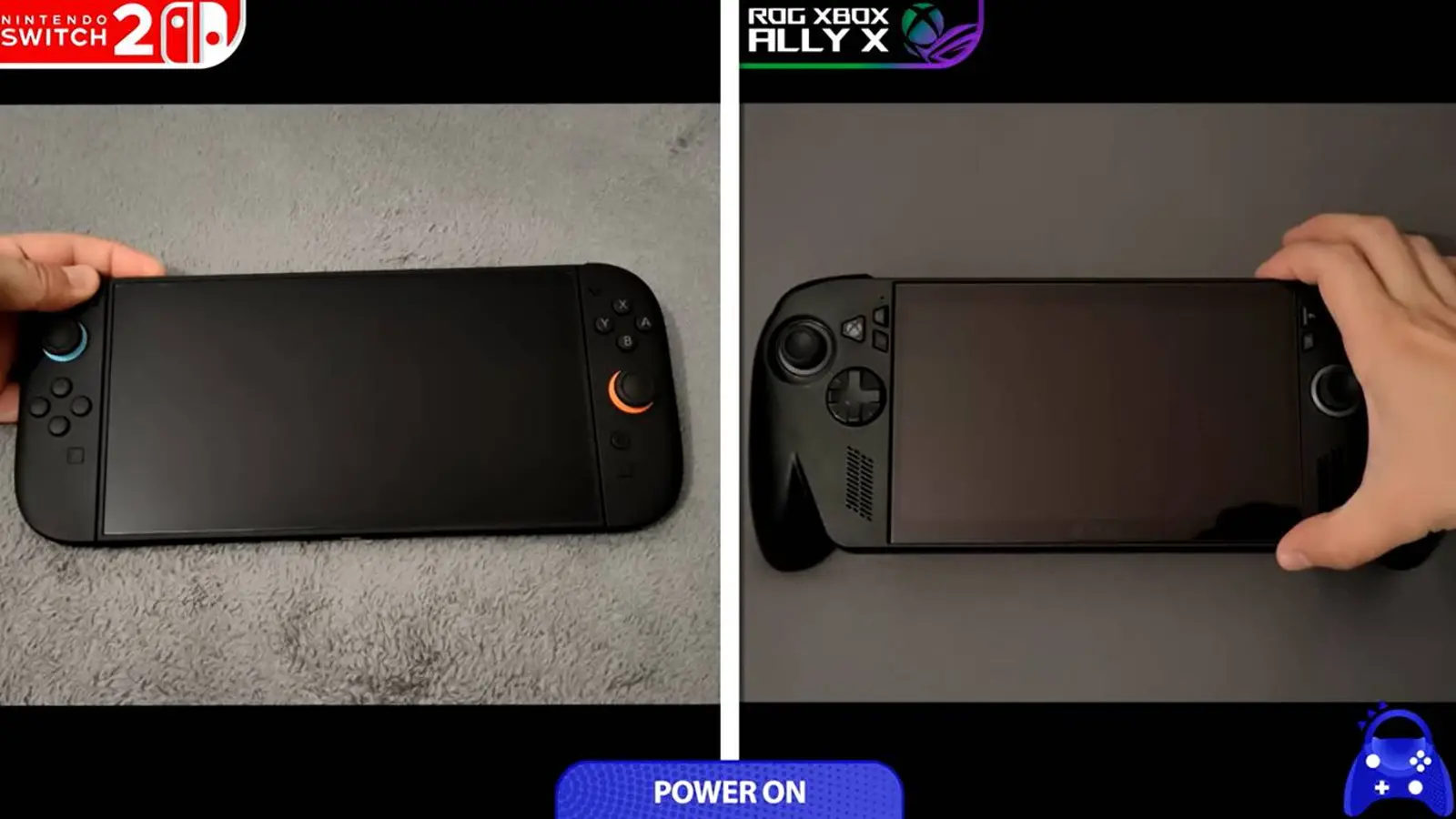https://pepelac.news/en/posts/id5771-nintendo-switch-2-vs-rog-ally-x-dlss-clarity-speed
Nintendo Switch 2 vs ROG Ally X: DLSS clarity, speed
Nintendo Switch 2 vs ROG Ally X: DLSS vs FSR, visuals and performance
Nintendo Switch 2 vs ROG Ally X: DLSS clarity, speed
We compare Nintendo Switch 2 and ASUS ROG Ally X: NVIDIA DLSS versus AMD FSR, image clarity, performance, boot speed and battery life across real games.
2025-10-16T17:24:56+03:00
2025-10-16T17:24:56+03:00
2025-10-16T17:24:56+03:00
Nintendo Switch 2 keeps surprising thanks to its NVIDIA DLSS support, which helps the console deliver higher image quality than ASUS’s ROG Ally X. A new comparison video by ElAnalistaDeBits shows that Switch 2 not only competes confidently with the Ally X on visuals, but also turns in impressive results across several games.The advantage is most obvious in image clarity, where NVIDIA’s DLSS comes off better than AMD’s FSR used on the Ally X. Even at a dynamic 635p resolution on Switch, the picture looks noticeably cleaner, with distant objects rendered in more detail. At the same time, the Nintendo console consistently runs games at visuals roughly comparable to PC “Medium” settings—a noteworthy feat for a handheld and a reminder of how much smart upscaling can shape the experience.Speed is another area where Switch 2 pulls ahead: it powers on and reboots faster, and in some cases its battery life outlasts the competition, though the Ally X can run longer in its energy-efficient mode. As for performance, the Ally X’s stronger hardware does yield higher frame rates, but the difference isn’t stark. In Hogwarts Legacy, for example, Switch holds a steady 30 FPS, while the Ally X reaches 40-plus only in Turbo mode; in Performance Mode, their results are broadly similar. Smooth, predictable delivery often matters just as much as raw numbers, and that comes through here.In the end, both systems deserve attention: the Ally X leans on brute-force hardware and higher frame rates, while Switch 2 impresses with a balance of optimization, image quality, and stability. For players looking for a versatile handheld without major trade-offs, Nintendo’s new console makes a particularly compelling case.
Nintendo Switch 2, ASUS ROG Ally X, NVIDIA DLSS, AMD FSR, image quality, handheld gaming, performance, frame rates, battery life, boot speed, Hogwarts Legacy, upscaling
2025
news
Nintendo Switch 2 vs ROG Ally X: DLSS vs FSR, visuals and performance
We compare Nintendo Switch 2 and ASUS ROG Ally X: NVIDIA DLSS versus AMD FSR, image clarity, performance, boot speed and battery life across real games.
© YouTube / ElAnalistaDeBits
Nintendo Switch 2 keeps surprising thanks to its NVIDIA DLSS support, which helps the console deliver higher image quality than ASUS’s ROG Ally X. A new comparison video by ElAnalistaDeBits shows that Switch 2 not only competes confidently with the Ally X on visuals, but also turns in impressive results across several games.
The advantage is most obvious in image clarity, where NVIDIA’s DLSS comes off better than AMD’s FSR used on the Ally X. Even at a dynamic 635p resolution on Switch, the picture looks noticeably cleaner, with distant objects rendered in more detail. At the same time, the Nintendo console consistently runs games at visuals roughly comparable to PC “Medium” settings—a noteworthy feat for a handheld and a reminder of how much smart upscaling can shape the experience.
Speed is another area where Switch 2 pulls ahead: it powers on and reboots faster, and in some cases its battery life outlasts the competition, though the Ally X can run longer in its energy-efficient mode. As for performance, the Ally X’s stronger hardware does yield higher frame rates, but the difference isn’t stark. In Hogwarts Legacy, for example, Switch holds a steady 30 FPS, while the Ally X reaches 40-plus only in Turbo mode; in Performance Mode, their results are broadly similar. Smooth, predictable delivery often matters just as much as raw numbers, and that comes through here.
In the end, both systems deserve attention: the Ally X leans on brute-force hardware and higher frame rates, while Switch 2 impresses with a balance of optimization, image quality, and stability. For players looking for a versatile handheld without major trade-offs, Nintendo’s new console makes a particularly compelling case.
